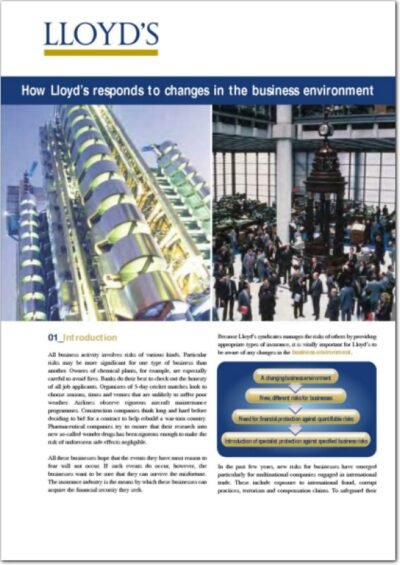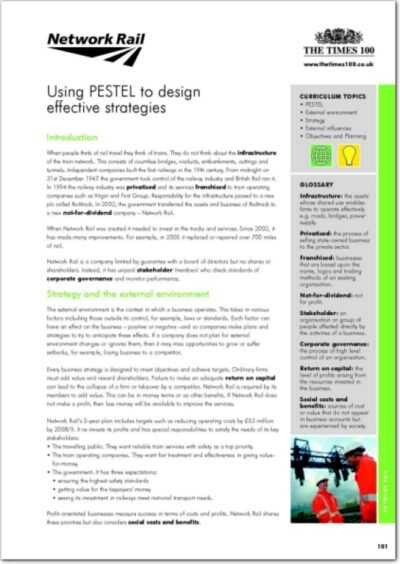Asset impairment is a critical concept in financial reporting and accounting, referring to a permanent reduction in the value of an asset below its carrying amount on the balance sheet. This phenomenon occurs when the market value of an asset declines significantly, indicating that it may no longer generate the expected future economic benefits. The recognition of asset impairment is essential for ensuring that financial statements accurately reflect the true value of a company’s assets, thereby providing stakeholders with a clear picture of its financial health.
The International Financial Reporting Standards (IFRS) and Generally Accepted Accounting Principles (GAAP) provide guidelines for assessing and recognising asset impairment. Under these frameworks, companies are required to conduct regular reviews of their assets to determine whether any indicators of impairment exist. If such indicators are identified, a more detailed analysis must be performed to ascertain whether the asset’s carrying amount exceeds its recoverable amount, which is defined as the higher of its fair value less costs to sell and its value in use.
This process ensures that financial statements remain relevant and reliable, reflecting the economic realities faced by the business.
Summary
- Asset impairment refers to a significant and permanent decrease in the value of an asset, which can have a negative impact on a company’s financial statements.
- Causes of asset impairment can include changes in market conditions, technological advancements, legal and regulatory changes, and physical damage to the asset.
- Identifying impairment of assets involves assessing whether the carrying amount of an asset exceeds its recoverable amount, and if so, recognising an impairment loss.
- Measurement of asset impairment involves determining the recoverable amount of the asset, which is the higher of its fair value less costs to sell and its value in use.
- Accounting for asset impairment requires recognising an impairment loss in the income statement and adjusting the carrying amount of the asset on the balance sheet.
Causes of Asset Impairment
Several factors can lead to asset impairment, ranging from changes in market conditions to technological advancements. One common cause is a decline in market demand for a company’s products or services, which can result in reduced cash flows and ultimately affect the value of associated assets. For instance, if a manufacturing company invests heavily in machinery to produce a specific product but subsequently faces decreased demand due to changing consumer preferences, the machinery may become impaired as it no longer contributes to generating expected revenues.
Another significant cause of asset impairment is technological obsolescence. In industries characterised by rapid innovation, such as electronics or software, assets can quickly lose their value if they are superseded by newer technologies. For example, a company that produces DVD players may find its inventory impaired as streaming services become the preferred method for consuming media.
In such cases, the assets may not only lose their market value but also incur additional costs related to storage or disposal, further exacerbating the financial impact on the company.
Identifying Impairment of Assets
Identifying asset impairment involves a systematic approach to evaluating both external and internal indicators that may suggest a decline in an asset’s value. External indicators can include significant changes in market conditions, such as economic downturns or increased competition, which may adversely affect the cash flows generated by an asset. For instance, if a retail chain experiences a sudden drop in foot traffic due to economic instability, this could signal potential impairment of its store locations.
Internal indicators are equally important and may encompass factors such as changes in management strategy or operational inefficiencies. For example, if a company decides to discontinue a product line due to poor performance, the assets associated with that line—such as inventory and production equipment—may need to be assessed for impairment. Regular assessments and monitoring of both external and internal factors are crucial for timely identification of impairment, allowing companies to take appropriate actions before the financial impact becomes more severe.
Measurement of Asset Impairment
Once impairment indicators have been identified, the next step is to measure the extent of the impairment. This process typically involves calculating the recoverable amount of the asset, which is determined by comparing its fair value less costs to sell with its value in use. Fair value is generally derived from market transactions involving similar assets or through valuation techniques such as discounted cash flow analysis.
In contrast, value in use is calculated based on the present value of expected future cash flows that the asset is anticipated to generate. For example, consider a company that owns a piece of machinery used in production. If the machinery’s fair value is estimated at £50,000 but it is expected to generate future cash flows of £40,000 over its remaining useful life, discounted to present value terms, the recoverable amount would be £40,000.
If this amount is lower than the carrying amount of the machinery on the balance sheet—say £60,000—the company would need to recognise an impairment loss of £20,000. This measurement process is vital for ensuring that financial statements accurately reflect the diminished value of impaired assets.
Accounting for Asset Impairment
The accounting treatment for asset impairment involves recognising any impairment losses in the financial statements and adjusting the carrying amount of the affected assets accordingly. Under IFRS and GAAP, when an asset is deemed impaired, the loss must be recorded in the income statement as an expense, which directly impacts net income for that reporting period. This recognition not only reflects the economic reality faced by the company but also ensures compliance with accounting standards.
In practice, once an impairment loss has been recognised, the carrying amount of the asset is adjusted downwards to its recoverable amount. This new carrying amount becomes the basis for future depreciation or amortisation calculations. For instance, if a company recognises an impairment loss on a building that reduces its carrying amount from £1 million to £800,000, future depreciation will be calculated based on this new figure.
It is important for companies to maintain accurate records and documentation throughout this process to support their accounting decisions during audits or regulatory reviews.
Reporting and Disclosing Asset Impairment
Transparency in reporting and disclosing asset impairment is crucial for maintaining stakeholder trust and ensuring compliance with regulatory requirements. Companies are required to provide detailed disclosures regarding any recognised impairment losses in their financial statements. This includes information about the nature of the impaired assets, the reasons for impairment, and how the recoverable amounts were determined.
For example, if a company recognises an impairment loss on goodwill due to underperformance in a specific business segment, it must disclose this information in its annual report. The disclosure should outline the factors leading to the impairment decision and provide insights into how management plans to address these challenges moving forward. Such transparency not only aids investors and analysts in understanding the company’s financial position but also enhances corporate governance by holding management accountable for their decisions regarding asset management.
Implications of Asset Impairment
The implications of asset impairment extend beyond immediate financial reporting concerns; they can significantly affect a company’s strategic direction and operational efficiency. Recognising an impairment loss can lead to reduced net income for the reporting period, which may influence investor perceptions and stock prices. A decline in asset values can also trigger covenants in loan agreements or affect credit ratings, potentially leading to increased borrowing costs or restricted access to capital.
Moreover, frequent occurrences of asset impairment may signal underlying issues within a company’s operations or market strategy. For instance, if a business consistently faces impairments across multiple asset categories, it may indicate poor management decisions or an inability to adapt to changing market conditions. This situation could prompt stakeholders to question management’s effectiveness and lead to calls for strategic changes or even leadership transitions.
Strategies to Mitigate Asset Impairment
To mitigate the risk of asset impairment, companies can adopt several proactive strategies aimed at enhancing asset management and operational efficiency. One effective approach is conducting regular reviews and assessments of assets to identify potential issues before they escalate into significant impairments. By implementing robust monitoring systems that track performance metrics and market trends, companies can make informed decisions regarding asset utilisation and investment.
Additionally, investing in employee training and development can enhance operational efficiency and reduce the likelihood of impairments arising from technological obsolescence or mismanagement. For example, companies can encourage innovation by fostering a culture that embraces change and encourages employees to seek out new technologies or processes that improve productivity. Furthermore, diversifying product lines or services can help mitigate risks associated with market fluctuations and reduce dependency on specific assets that may be vulnerable to impairment.
In conclusion, understanding asset impairment is essential for effective financial management and reporting within any organisation. By recognising its causes, identifying potential impairments early on, measuring their impact accurately, and implementing strategies to mitigate risks, companies can safeguard their financial health and maintain stakeholder confidence in their operations.
Asset impairment is a crucial concept in accounting that can have significant implications for businesses. In a related article on legal tips for business owners, the importance of understanding and properly accounting for asset impairment is highlighted. This article provides valuable insights into the legal considerations that business owners need to keep in mind when dealing with asset impairment issues. It emphasises the need for businesses to stay compliant with relevant laws and regulations to avoid potential legal pitfalls. Understanding asset impairment is essential for business owners to make informed decisions and protect their financial interests.
FAQs
What is asset impairment?
Asset impairment refers to a significant and permanent decrease in the value of an asset, such as property, plant, equipment, or intangible assets, below its carrying amount on the balance sheet.
What causes asset impairment?
Asset impairment can be caused by various factors such as changes in market conditions, technological advancements, legal or regulatory changes, or a decline in the asset’s usefulness.
How is asset impairment measured?
Asset impairment is measured by comparing the carrying amount of the asset with its recoverable amount, which is the higher of its fair value less costs to sell or its value in use.
How is asset impairment recorded in financial statements?
When an asset is impaired, the impairment loss is recognised in the income statement, reducing the carrying amount of the asset to its recoverable amount. This adjustment is made to reflect the decrease in the asset’s value.
What are the accounting standards for asset impairment?
The accounting standards for asset impairment are set out in International Financial Reporting Standards (IFRS) and Generally Accepted Accounting Principles (GAAP), which provide guidance on the recognition, measurement, and disclosure of impairment losses.
 Feeding and fuelling the world through technology (MP3)
Feeding and fuelling the world through technology (MP3)  How Lloyd's responds to changes in the business environment (PDF)
How Lloyd's responds to changes in the business environment (PDF)  Creating value - brand management (PDF)
Creating value - brand management (PDF)  CMI A3 ePoster Edition 17 "Managing change"
CMI A3 ePoster Edition 17 "Managing change"  UNISON A3 ePoster Edition 15 "Negotiation and representation at work"
UNISON A3 ePoster Edition 15 "Negotiation and representation at work"  Using PESTEL to design effective strategies (PDF)
Using PESTEL to design effective strategies (PDF) 

